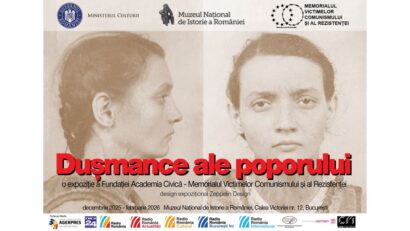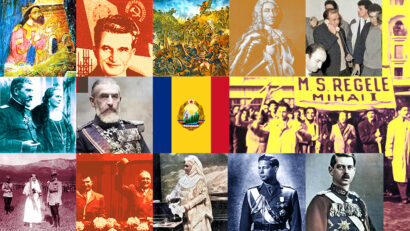Wallachia during Vlad the Impaler’s reign
Vlad the Impaler, also known as Dracula, was ruler of Wallachia for the first time in 1448.

Steliu Lambru, 16.05.2016, 13:39
Vlad the Impaler, also known as Dracula, was ruler of Wallachia for the first time in 1448. It was a short stint, while his second stint as a ruler, also the most relevant one, began in 1456 and lasted until 1462. Vlad the Impaler would also be ruler of Wallachia for the third and last time, in 1477. Two months into his reign, at the age of 45, Vlad the Impaler was killed in a court plot.
Vlad the Impaler was a man of his time. He ascended the throne for the second time when he was 25, with the support of Iancu of Hunedoara, the then ruling price of Transylvania, in a bid to ward off Ottoman expansion in Europe. Historian Stefan Andreescu provided us with a detailed account of the circumstances in which Vlad the Impaler took over the throne of his father Vlad Dracul.
”In 1456, another great clash between the Islam and Christian Europe took place, which ended up in the resistance to the siege of Belgrade, which was a successful one. However, it took more than a century and a half to conquer Belgrade. Being fully aware of what was going to follow, Iancu of Hunedoara resumed his policy of strengthening the line of River Danube, which meant that he needed a reliable ally on Wallachia’s throne. Vlad the Impaler came from Transylvania, but he also enjoyed domestic political support, since there was a group of boyars who recognized him as their ruler.”
An authoritarian and anti-Ottoman ruler, having spent his youth as a hostage at the Sultan’s court, Vlad the Impaler was adamant in eradicating the anarchy which at the time was rampant in Wallachia, a principality he sought to include in Christian alliances.
With details on that, here is historian Stefan Andreescu again :”He would ascend the throne in the wake of decades of clashes and turmoil. It was, if you will, an age when anarchy reigned supreme and to that effect he tried to secure domestic support and crush all prospective pockets of opposition that posed a threat to his throne. In the Slavonic version of the Tales about ruler Dracula and also in their German version, there is evidence of the extremely harsh measures he took, and one such measure was the one against a powerful family since Vlad had been attacked. It was the uprising mounted by Albu, who wanted to seize the throne. He did not carry it through, and proof of that is the fact that it was also a faction of boyars who denounced him to the High Porte when he stopped paying the tribute and sought to join a Christian alliance deaded by Pope Pius the 2nd. “
Vlad the Impaler relied on a couple of allies. First and foremost, he relied on Iancu of Hunedoara, who was his protector, then on the king of Hungary Matthias Corvinus and the Moldavian ruling prince Stephen the Great.
Stefan Andreescu: ”Stephen the Great and Vlad the Impaler were cousins. Stephen the Great seized the throne of Moldavia in the spring of 1457, with the support of Vlad the Impaler. In 1476 the latter was, for the third time, reinstated on the throne of Wallachia, with Stephen the Great’s support. However, before that, in 1462, conflict had flared up between the two rulers when Stephen the Great unsuccessfully attempted to seize the Chilia fortress. That fortress was actually Wallachia’s opening post to the sea, through the Danube. According to the historian Nicole Iorga, it was Stephen the Great ‘s responsibility to protect that highly important point from the Ottomans. The conflict had a strategic motivation, yet in the long run the blood ties turned out to be stronger.”
In the battles he fought against the Turks, since he was always outnumbered, Vlad the Impaler avoided an open confrontation. His most important success, a psychological one, actually, was the famous night attack in 1461.
Stefan Andreescu once again: ”He resorted to tactics which proved successful, the earth was scorched, fountain water was poisoned, there were also the gory visual messages, so to speak, and by that I mean the field of pales, with Ottoman soldiers and all sorts of villains being impaled near Targoviste. One of his best-known exploits aimed at terrifying the Ottomans was the night attack, which was an unusual action. There are several descriptions of that attack, and also an Ottoman chronicle giving an account of the panic caused by that attack, which targeted the Sultan’s tent, as he wanted to kill Mehmet the 2nd. A Pontifical Legate, Nicolo of Modrusa, sat down and talked to Vlad the Impaler when he was imprisoned in Buda, and described the attack. The other commander, who was supposed to attack the Ottoman camp from the opposite side, got scared and did not start the attack. It was only Vlad the Impaler’s army corps that, under the light of the torches, advanced to the center of the camp, but they missed the Sultan’s tent, Janissaries closed ranks and the Impaler had no choice other that to withdraw.”
It was also Nicolo of Modrusa who left a written description of the Impaler, which was quite similar to the famous picture depicting the Wallachian ruler in the Ambras Castle in Tirol. “Vlad the Impaler was not very tall, but very stocky and strong, with a cold and terrible appearance, a strong and aquiline nose, swollen nostrils, a thin reddish face in which very long eyelashes framed large wide-open green eyes; the bushy black eyebrows made them appear threatening. His face and chin were shaven, but for a moustache. The swollen temples increased the bulk of his head. A bulls neck joined his neck to his wide shoulders, with black curly locks hanging around them.
(Translated by Eugen Nasta)






























